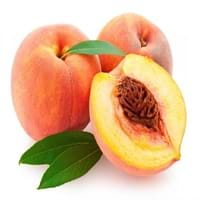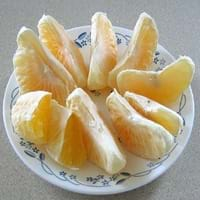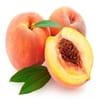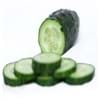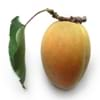Health Benefits
Cancer prevention, Heart care, Improves eye vision, Reduces stress, Regulation of heart rate
Increases metabolic rate, Lower blood pressure, Protects against kidney stone formation
General Benefits
Anti oxidant properties, Eye care
Gives you energy
Skin Benefits
Heals sunburn, Reduces wrinkles, Treatment of skin diseases
Skin cleansing
Hair Benefits
Prevents hair loss
NA
Allergy Symptoms
Abdominal pains, Anaphylaxis, Breathing difficulty, Diarrhea, Dizziness, Hives, Itching, Lightheadedness, Nasal congestion, Nausea, Swelling of mouth, tongue or lips, Tingling sensation in mouth, Vomiting, Wheezing
NA
Side Effects
Allergic reaction
Affects blood glucose levels, Decrease in blood sugar levels, Coagulation
Best Time to Eat
As a snack in the late afternoon, Eat the fresh ones, avoid mixing with any other foods, don't eat after meal., Morning time (before lunch)
As a snack in the late afternoon, Eat the fresh ones, avoid mixing with any other foods, don't eat after meal., Morning time (before lunch)
Vitamin A (Retinol)
Not Available
Vitamin B1 (Thiamin)
Not Available
Vitamin B2 (Riboflavin)
Not Available
Vitamin B3 (Niacin)
Not Available
Vitamin B5 (Pantothenic Acid)
Not Available
Vitamin B6 (Pyridoxin)
Not Available
Vitamin B9 (Folic acid)
Not Available
Vitamin C (Ascorbic Acid)
Vitamin E (Tocopherole)
Not Available
Vitamin K (Phyllochinone)
Not Available
Lutein+Zeaxanthin
Not Available
Phytosterol
Not Available
Water Content
Not Available
Calories in Fresh Fruit with Peel
Calories in Fresh Fruit without Peel
Not Available
Not Available
Calories in Frozen Form
Not Available
Calories in Dried Form
Not Available
Calories in Canned Form
Not Available
Calories in Pie
Not Available
Season
Autumn, Summer
Dry
Varieties
Reliance, Sweet Scarlet, Spring Snow, Sugar May, Santa Rosa, Red Beauty, Glowhaven, Cresthaven and Redhaven Peaches
NA
Color
Pink, Red, White, Yellow, Yellowish-orange
Orange, Yellow
Inside Color
Yellow
Creamy Yellow
Soil Type
Sandy loam, Well-drained
Loamy
Climatic Conditions
Cold, Warm
Warm
Facts about
- In china, peaches are considered as a symbol of good luck.
- From 1982, august is National peach month in USA.
- In roman times, Peaches were also called as Persian apples, as people assumed that they originated from Persia.
- The name is derived from the word "ugly" refering to the it's unpleasant appearance, with rough, wrinkled, greenish-yellow rind, wrapped loosely around the orange pulpy citrus inside.
Top Producer
China
Jamaica
Other Countries
Greece, Italy, Spain, United States of America
NA, United States of America
Top Importer
Germany
Europe
Top Exporter
Spain
Jamaica
Botanical Name
Prunus persica
Citrus reticulata × Citrus paradisi
Synonym
Not Available
Tangelo, citrus tangelo
Subkingdom
Tracheobionta
Tracheobionta
Division
Magnoliophyta
NA
Class
Magnoliopsida
Unknown
Species
P. persica
C. reticulata × paradisi
Generic Group
Rose
Citrus fruit
Difference Between Peach and Ugli fruit
We might think that Peach and Ugli fruit are similar with respect to nutritional value and health benefits. But the nutrient content of both fruits is different. Peach and Ugli fruit Facts such as their taste, shape, color, and size are also distinct. The difference between Peach and Ugli fruit is explained here.
The amount of calories in 100 gm of fresh Peach and Ugli fruit with peel is 39.00 kcal and 45.00 kcal and the amount of calories without peel is Not Available and Not Available respectively. Thus, Peach and Ugli fruit belong to Low Calorie Fruits and Low Calorie Fruits category.These fruits might or might not differ with respect to their scientific classification. The order of Peach and Ugli fruit is Rosales and Sapindales respectively. Peach belongs to Rosaceae family and Ugli fruit belongs to Rutaceae family. Peach belongs to Prunus genus of P. persica species and Ugli fruit belongs to Citrus genus of C. reticulata × paradisi species. Beings plants, both fruits belong to Plantae Kingdom.
